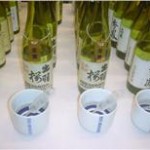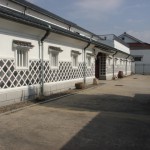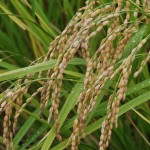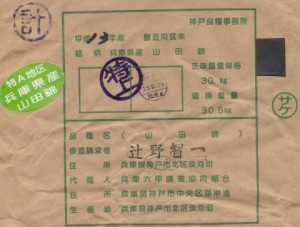The Nihonshu-do: Fuhgedaboudit
…unless you are brewing
Recently, I received correspondence requesting me to gather the nihonshu-do for a ![image824190[1]](http://sake-world.com/wp-content/uploads/2013/03/image8241901-100x150.gif) handful of sake that I help represent. The company requesting this information sought it, presumably, to allow their sales staff differentiate themselves from their competition, as they are in a country just starting to get into sake, perhaps to make it seem easier for the customers to select products to carry.
handful of sake that I help represent. The company requesting this information sought it, presumably, to allow their sales staff differentiate themselves from their competition, as they are in a country just starting to get into sake, perhaps to make it seem easier for the customers to select products to carry.
Most readers surely recall that the nihonshu-do, or SMV as it is sometimes called outside of Japan, is a number that is supposed to indicate sweetness or dryness in a sake. It generally runs from -3 to +10, and “higher is dryer.” However, in reality, the number is almost useless except in its extreme manifestations, since a handful of things like acidity, temperature, perception, aromas, water, glassware, and certainly accompanying food all add about 20 percent error each. That last sentence alone could potentially yield 140 percent error in one sip. Hence the “almost useless” wording.
~~~~~~~~~~~~~~~~~~~~~~~~~~~~~~~~~~~~~~~~~~~~~~~~~~~~~~~~~~~~~
The 2013 Sake Professional Course in New York will be held May 8 ~ 10, 2013. Learn more and make a reservation here: http://www.sake-world.com/html/spcny.html
~~~~~~~~~~~~~~~~~~~~~~~~~~~~~~~~~~~~~~~~~~~~~~~~~~~~~~~~~~~~~~
But they wanted the numbers nonetheless. Note, many brewers put this number on the bottle (which is part of the problem, actually, as they entice consumers to pay attention to it), but others do not. So I dutifully contacted all the brewers and asked them for the nihonshu-do of the relevant products. All swiftly complied and sent me the data – save one.
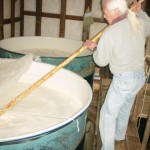 That “one” was dreadfully slow in getting back to me. Not that I was surprised; I more or less had expected that based on past dealings with them. In the sake world, I have learned, the speed of response from a kura is proportional to the length of their history. Backing gingerly away from the brink of that diversion, when his response did come, it was in the form of a refusal to comply. And it came with accentuated with sharp wording.
That “one” was dreadfully slow in getting back to me. Not that I was surprised; I more or less had expected that based on past dealings with them. In the sake world, I have learned, the speed of response from a kura is proportional to the length of their history. Backing gingerly away from the brink of that diversion, when his response did come, it was in the form of a refusal to comply. And it came with accentuated with sharp wording.
In short, he tore me a new… well, let’s just say I was instructed as to the nature of my misperceptions (a recurring theme with me).
“John, we do not make that information public. You should know that. It is irrelevant to the nature and quality of a sake, and serves only to confuse folks. And that is not just us; the industry has been moving away from this for years now. You are not helping things by promoting this at this stage…”
Yes, I responded politely, I did realize that, and I always do my best to make it clear the nihonshu-do is not worth much attention, but the customer wanted it, and right or wrong, refusing to cooperate would mean that your sake might not be available there, so that like many things in life, a compromise is at least worth considering.
This thought was scoffed at, and the scathing reprimand continued for another unbearable minute or so. Of course, he was right. And it seems the only way to support that correctness is to convey that to consumers themselves as often as needed.
So here goes: Except in its extreme manifestations, the nihonshu-do is almost meaningless in terms of telling us what a sake will taste like, i.e. sweet or dry. In fact, very seriously, it was never intended for consumers’ use.
The nihonshu-do is the specific gravity, i.e. the density of the stuff compared to that of pure water. And during the brewing process, as that changes, it tells brewers how much sugar has been converted to alcohol. As the density of the fermenting mash decreases, the nihonshu-do number indicates decreasing sugar (which adds to density) and increasing alcohol (which reduces density). And even that is a borderline-gross simplification. The final number, i.e. the nihonshu-do of a completed sake, is an aimed-for number that is part of the recipe, so to speak. But it is one of a gazillion factors, and not overly indicative of one single aspect of the flavor profile.
So, again, the nihonshu-do was never intended for consideration on the part of consumers. Am I saying to totally ignore it? Nah. Let’s not go that far. I wouldn’t go out of my way to prevent it from entering my sphere of consciousness! But I am saying don’t worry about it. And I am for sure saying don’t make a big deal out of it.
The point here is not to bad-mouth the nihonshu-do, or those that choose to pay attention to it. Rather, the true gist really is to encourage people to trust their own palates and experiences with sake more than anything else. That’s what it’s all about.
~~~~~~~~~~~~~~~~~~~~~~~~~~~~~~~~~~~~~~~~~~~~~~~~~~~~~~~~~~~~~
The 2013 Sake Professional Course in New York will be held May 8 ~ 10, 2013. Learn more and make a reservation here: http://www.sake-world.com/html/spcny.html
~~~~~~~~~~~~~~~~~~~~~~~~~~~~~~~~~~~~~~~~~~~~~~~~~~~~~~~~~~~~~~





